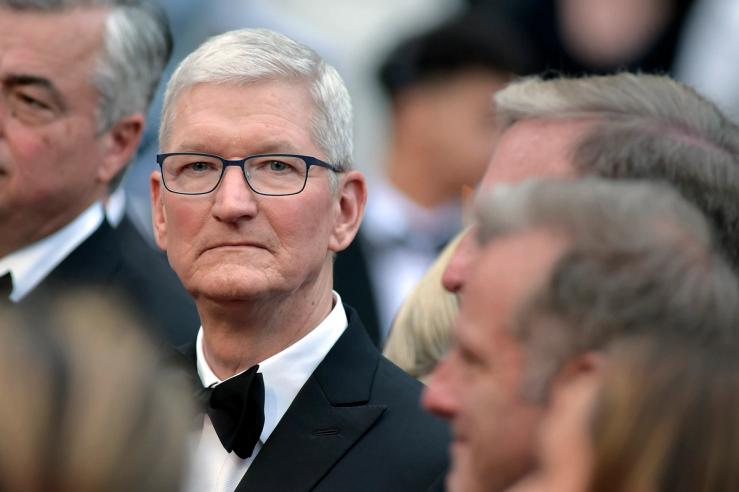The News
Among the flurry of U.S. antitrust pressures on big technology companies, the Department of Justice’s long-awaited lawsuit against Apple is one of the few that highlights the financial costs to consumers.
The government’s legal complaint targets Apple’s broad business model, accusing the iPhone maker of stifling competition and innovation with anti-competitive tactics. The allegations include prohibiting the creation of super apps to keep customers locked into Apple’s ecosystem, and preventing third-party digital wallets to block competition from other financial institutions.
“Consumers should not have to pay higher prices because companies break the law,” Attorney General Merrick Garland said Thursday.
Apple charges up to about $1,600 for an iPhone, around $400 more than the average weekly earnings for a U.S. worker. Other government lawsuits against Google and Facebook have targeted services or platforms that are free for users.
Consumer prices have been the traditional lens that courts have used to view antitrust cases, compared to the recent trend under the Biden administration to expand that outlook to encompass quality of service and other factors.
“This lawsuit threatens who we are and the principles that set Apple products apart in fiercely competitive markets,” Apple said. “At Apple, we innovate every day to make technology people love — designing products that work seamlessly together, protect people’s privacy and security, and create a magical experience for our users.”
In this article:
Know More
Apple faced a warmup of sorts when it was sued by Epic Games in 2020, claiming Apple’s alleged monopoly over the App Store allowed it to extract exorbitant, 30% fees from developers on the platform.
Apple was largely successful in that case, which was more narrowly focused than the Justice Department’s lawsuit.
Apple has also faced scrutiny in Europe. It was recently fined $2 billion for allegedly hindering competition in the music streaming industry.
The European Digital Markets Act forced Apple to allow side-loading of apps onto its phones, something the company has long fought, citing security concerns.
Reed’s view
When I started covering Apple for The Washington Post in 2019, a different antitrust case revealed to me that the inner workings of the iPhone maker were much different than its public image.
One of the first stories I covered then was Apple’s lawsuit against Qualcomm, which was accused of having a wireless modem monopoly and overcharging companies for the device. Apple paid Qualcomm about $7 per phone.
The opening arguments in that trial were riveting. Apple’s slide presentation included a photo of Radar O’Reilly, the comic relief radio operator from M.A.S.H. That was Qualcomm, Apple’s lawyers argued, the company that simply operated the radio on Apple’s otherwise sophisticated device.
Then it was Qualcomm’s lawyers’ turn. They revealed bombshell documents that had not been publicly seen before; Apple’s lawyers had accidentally sent them to Qualcomm.
The documents showed that Apple’s lawsuit was years in the making, part of a masterful plan to target Qualcomm and thus reduce their $7 per iPhone fee. Apple’s executives openly discussed how Qualcomm’s technology was the best in the business and impossible to replicate.
Apple had tried to replace some of Qualcomm modems with a different model made by Intel. But Qualcomm chips were so much faster that Apple had to secretly throttle them so that all of its phones would operate at the same level.
Qualcomm didn’t even get to finish its opening arguments. Apple backed down and settled with Qualcomm.
Those documents were my first peek behind the Cupertino curtain and they were telling. Every company has its marketing spin, but the gulf between how Apple presents itself to consumers and how it operates internally was wider than I had imagined.
Far from Radar O’Reilly, the Qualcomm modems were actually essential and incredibly sophisticated. Apple had opened an office in San Diego and lured away many of Qualcomm’s experienced engineers in hopes of building its own modem. Later, it acquired Intel’s modem division for $1 billion. It’s been a 10-year effort and Apple still hasn’t built its modem.
But Apple was willing to embark on a multi-year plan to destroy Qualcomm, the company that pioneered the wireless technology that enabled the iPhone’s existence, to shave a few dollars off the cost of the Apple devices.
Now contrast that with a line buried in the 80-page Justice Department complaint Thursday: The original iPhone was priced at $299, or $450 in today’s dollars. The cost of computers has plummeted since then. The latest iPhone ranges from $800 to $1600.
It’s hard to believe that the price increases of the iPhone are due to “market forces.” The devices are costly mini computers that can’t even be used to their fullest potential, thanks to Apple’s restrictions.
And this is how the DOJ’s case against Apple stands out from the ones against the other major tech companies: It directly goes to the prices paid by Apple’s customers.
Breaking down Apple’s walled garden would mean more consumer choice, including lower costs or more advanced features.
Room for Disagreement
Jim Cramer of CNBC thinks the DOJ is going to lose. “To Cramer, the DOJ hasn’t found any ‘smoking guns’ that implicate Apple as a guilty party,” according to CNBC. “He said this case is different from, for example, the government’s antitrust suit against Microsoft more than 20 years ago. The PC maker did control the vast majority of the global market share at one point, Cramer conceded, but asserted the same is not true for Apple.”
Notable
- One of the more interesting aspects of the antitrust lawsuit is the section on Apple CarPlay. Last year, General Motors stirred controversy when it said it would discontinue CarPlay in its vehicles, but the DOJ lawsuit hints there was actually more to the story. The DOJ alleges that Apple wanted to force GM to allow Apple to take over more aspects of the car. The Verge argues that the DOJ’s concerns might be overblown.


